Abstract
Differences in genetic susceptibility to hazardous chemicals affect individuals of both human and nonhuman populations. In both cases, differences in response to chemicals or general ill health result as a function of these differences in genetic susceptibility. However, ecological systems are a compilation of hundreds or even thousands of different species, resulting in structural and functional characteristics that are themselves affected by differences in susceptibility. Although individual and population differences in susceptibility to hazardous chemicals underlie effects at the community and the ecosystem level, they do not account for all differences. I propose a two-tiered approach to evaluating susceptibility to ecological systems: a general susceptibility as a function of ecosystem type (based on structure and function of that system) and a differential in susceptibility within broad ecosystem types as a function of biotic and abiotic factors. In terrestrial ecosystems, the two factors that most affect overall susceptibility are species diversity and hydrology; evaluation of the effects of hazardous chemicals involves measuring species diversity and water movement. This same methodological approach can be applied to aquatic ecosystems and to highly altered ecosystems such as agriculture, forestry, fisheries, and urbanization.
Full text
PDF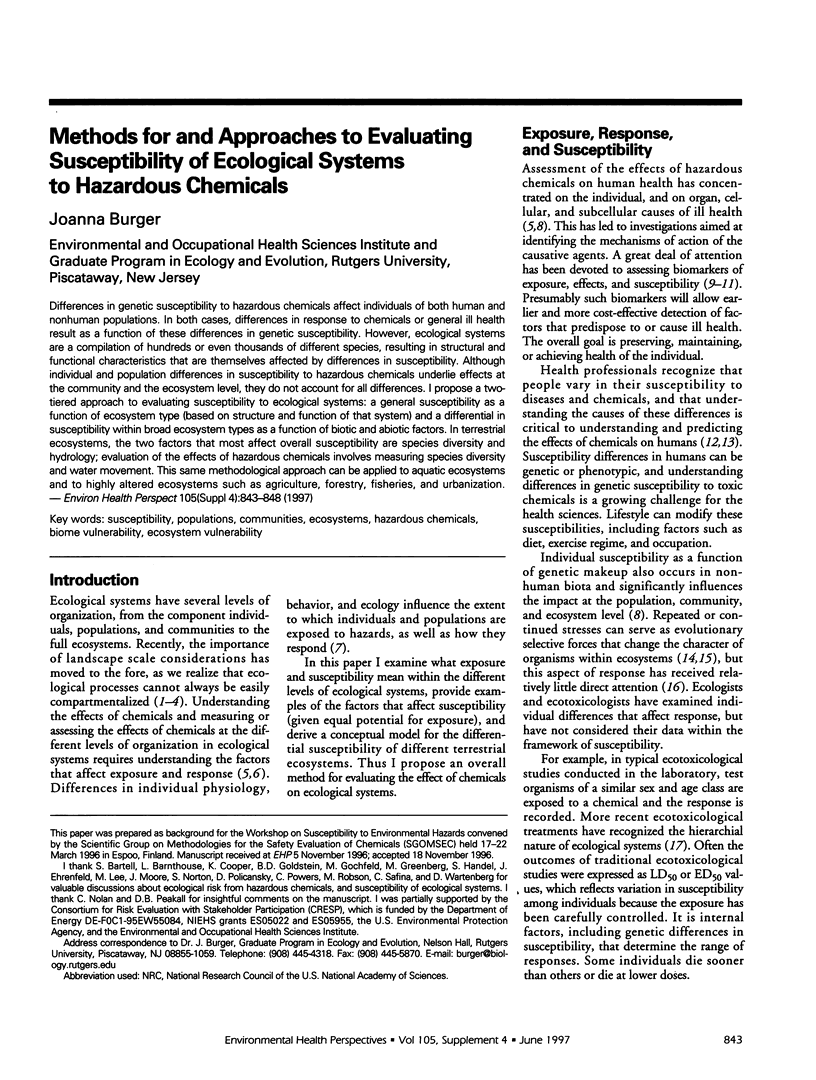
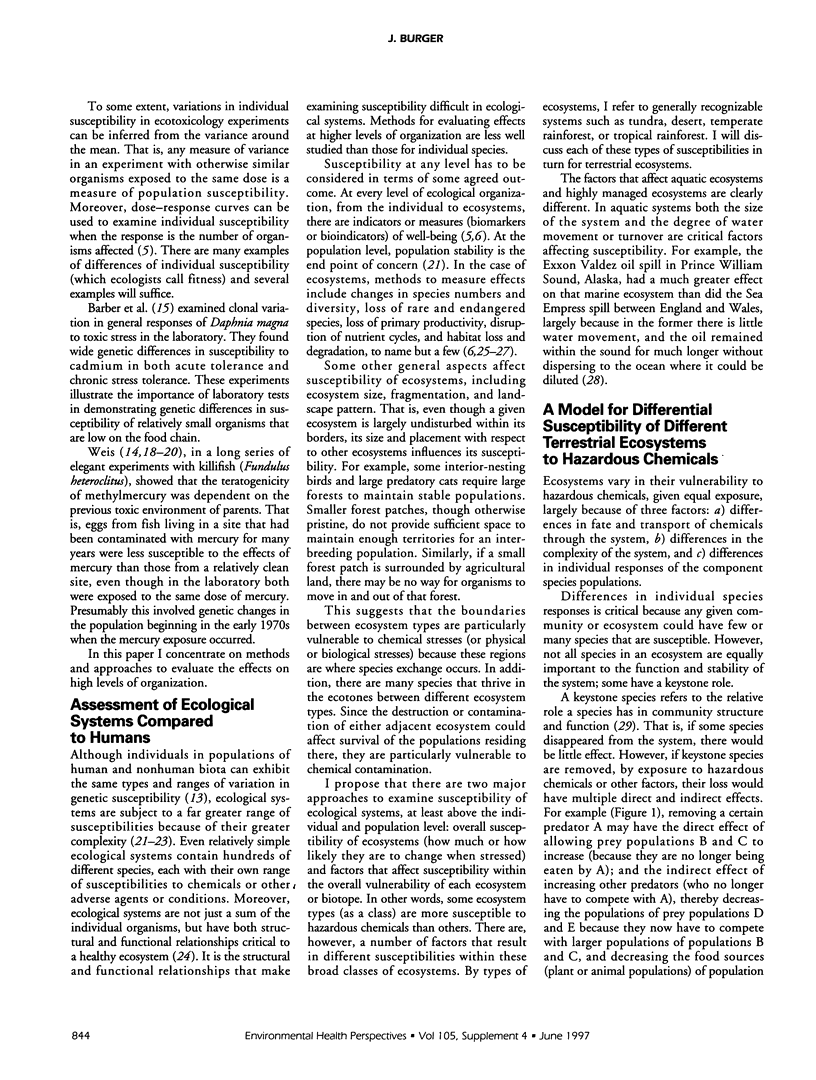
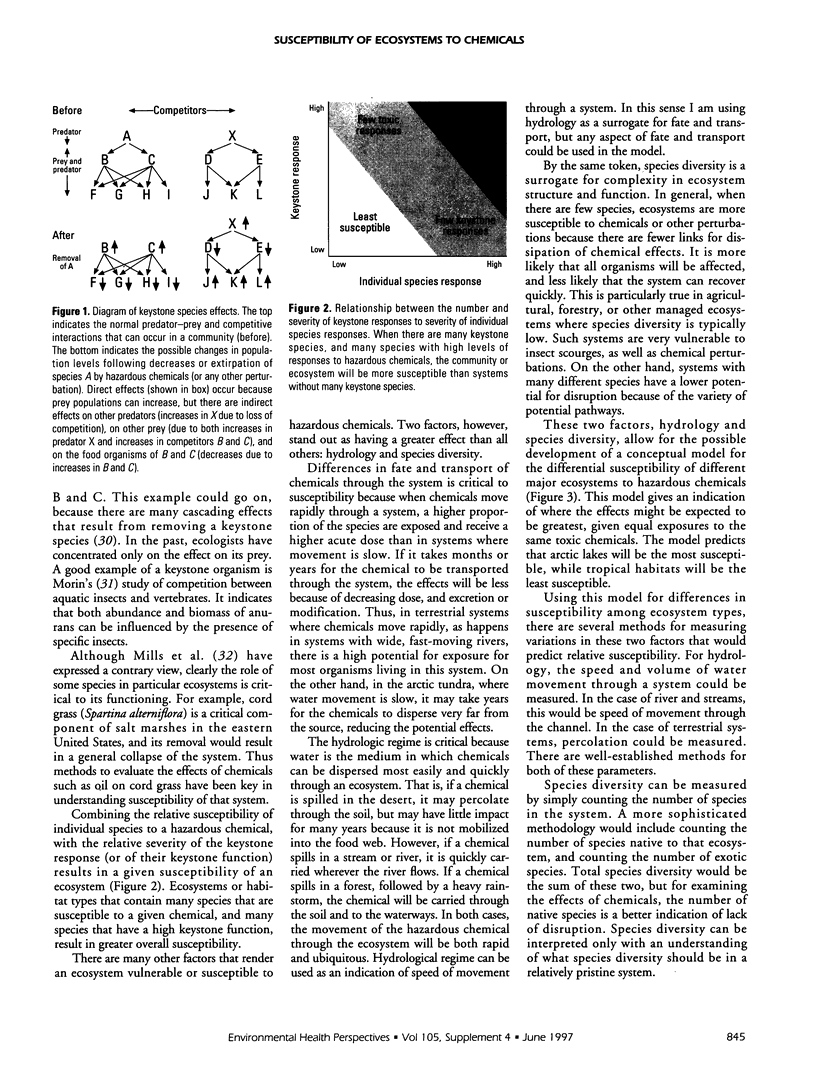
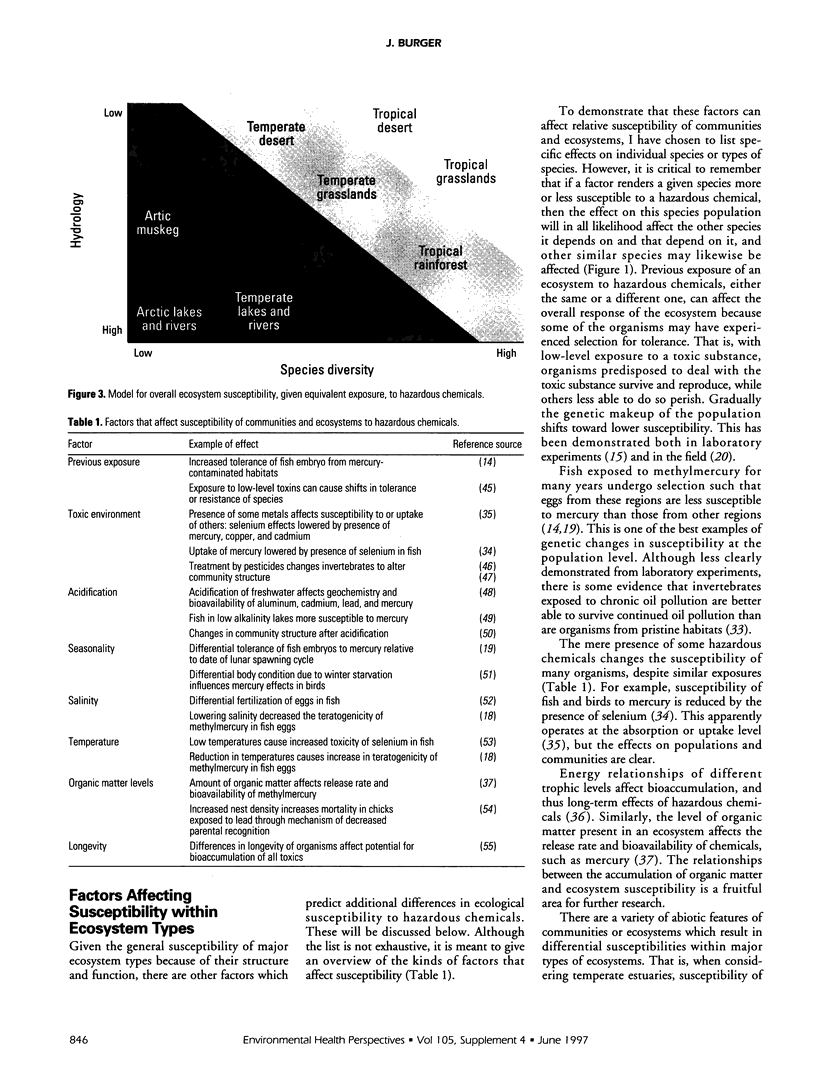
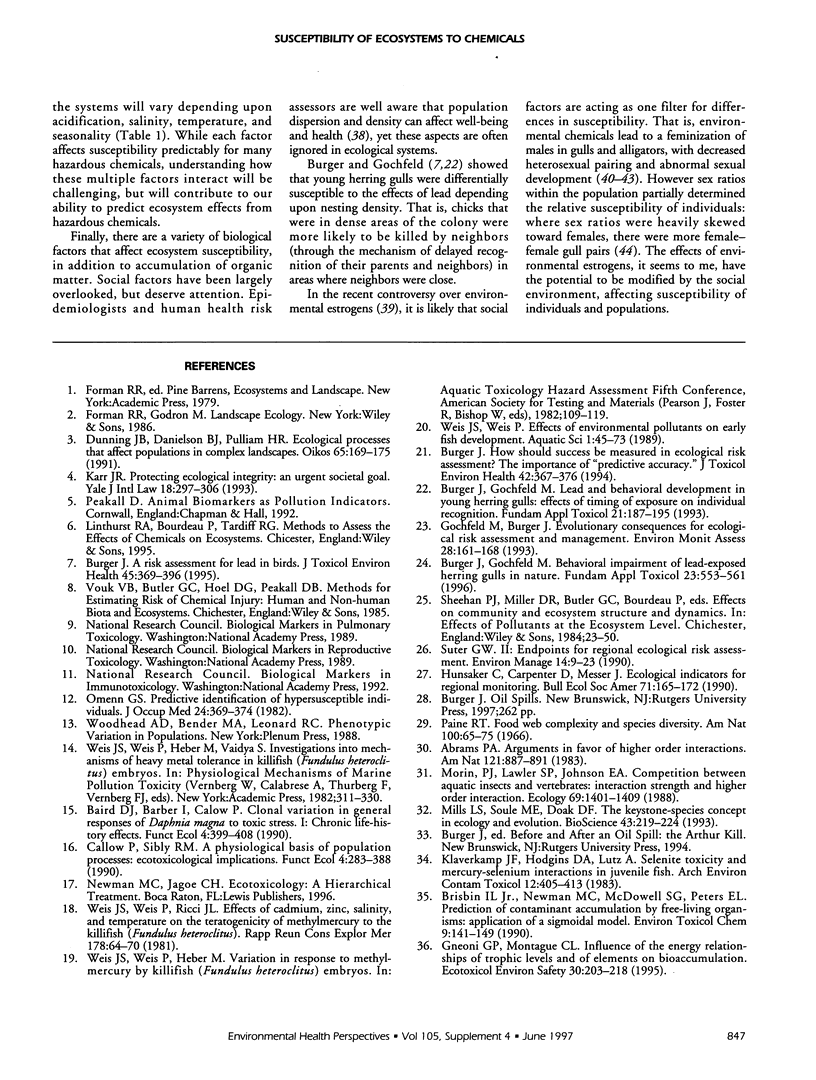
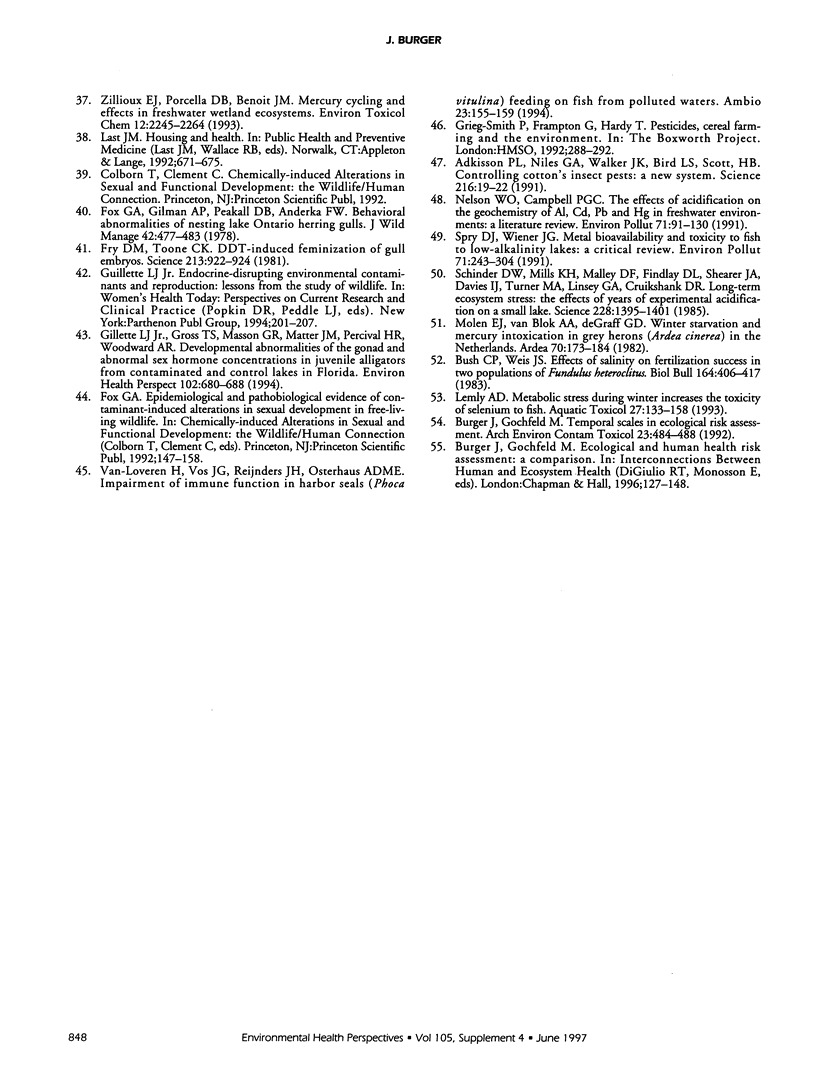
Selected References
These references are in PubMed. This may not be the complete list of references from this article.
- Adkisson P. L., Niles G. A., Walker J. K., Bird L. S., Scott H. B. Controlling Cotton's Insect Pests: A New System. Science. 1982 Apr 2;216(4541):19–22. doi: 10.1126/science.216.4541.19. [DOI] [PubMed] [Google Scholar]
- Burger J. A risk assessment for lead in birds. J Toxicol Environ Health. 1995 Aug;45(4):369–396. doi: 10.1080/15287399509532003. [DOI] [PubMed] [Google Scholar]
- Burger J., Gochfeld M. Behavioral impairments of lead-injected young herring gulls in nature. Fundam Appl Toxicol. 1994 Nov;23(4):553–561. doi: 10.1006/faat.1994.1140. [DOI] [PubMed] [Google Scholar]
- Burger J., Gochfeld M. Lead and behavioral development in young herring gulls: effects of timing of exposure on individual recognition. Fundam Appl Toxicol. 1993 Aug;21(2):187–195. doi: 10.1006/faat.1993.1088. [DOI] [PubMed] [Google Scholar]
- Burger J., Gochfeld M. Temporal scales in ecological risk assessment. Arch Environ Contam Toxicol. 1992 Nov;23(4):484–488. doi: 10.1007/BF00203814. [DOI] [PubMed] [Google Scholar]
- Burger J. How should success be measured in ecological risk assessment? The importance of predictive accuracy. J Toxicol Environ Health. 1994 Aug;42(4):367–376. doi: 10.1080/15287399409531888. [DOI] [PubMed] [Google Scholar]
- Fry D. M., Toone C. K. DDT-induced feminization of gull embryos. Science. 1981 Aug 21;213(4510):922–924. doi: 10.1126/science.7256288. [DOI] [PubMed] [Google Scholar]
- Genoni G. P., Montague C. L. Influence of the energy relationships of trophic levels and of elements on bioaccumulation. Ecotoxicol Environ Saf. 1995 Mar;30(2):203–218. doi: 10.1006/eesa.1995.1025. [DOI] [PubMed] [Google Scholar]
- Guillette L. J., Jr, Gross T. S., Masson G. R., Matter J. M., Percival H. F., Woodward A. R. Developmental abnormalities of the gonad and abnormal sex hormone concentrations in juvenile alligators from contaminated and control lakes in Florida. Environ Health Perspect. 1994 Aug;102(8):680–688. doi: 10.1289/ehp.94102680. [DOI] [PMC free article] [PubMed] [Google Scholar]
- HERNANDEZ C., CHARLEUX H., PICARD J. M., MORIN G. [Subhepatic phlebography. Original technic]. Presse Med. 1961 Jun 21;69:1409–1410. [PubMed] [Google Scholar]
- Klaverkamp J. F., Hodgins D. A., Lutz A. Selenite toxicity and mercury-selenium interactions in juvenile fish. Arch Environ Contam Toxicol. 1983 Jul;12(4):405–413. doi: 10.1007/BF01057583. [DOI] [PubMed] [Google Scholar]
- Nelson W. O., Campbell P. G. The effects of acidification on the geochemistry of Al, Cd, Pb and Hg in freshwater environments: a literature review. Environ Pollut. 1991;71(2-4):91–130. doi: 10.1016/0269-7491(91)90030-z. [DOI] [PubMed] [Google Scholar]
- Omenn G. S. Predictive identification of hypersusceptible individuals. J Occup Med. 1982 May;24(5):369–374. doi: 10.1097/00043764-198205000-00007. [DOI] [PubMed] [Google Scholar]
- Schindler D. W., Mills K. H., Malley D. F., Findlay D. L., Shearer J. A., Davies I. J., Turner M. A., Linsey G. A., Cruikshank D. R. Long-term ecosystem stress: the effects of years of experimental acidification on a small lake. Science. 1985 Jun 21;228(4706):1395–1401. doi: 10.1126/science.228.4706.1395. [DOI] [PubMed] [Google Scholar]
- Smith R. C., Reinhold C., McCauley T. R., Lange R. C., Constable R. T., Kier R., McCarthy S. Multicoil high-resolution fast spin-echo MR imaging of the female pelvis. Radiology. 1992 Sep;184(3):671–675. doi: 10.1148/radiology.184.3.1324508. [DOI] [PubMed] [Google Scholar]
- Spry D. J., Wiener J. G. Metal bioavailability and toxicity to fish in low-alkalinity lakes: A critical review. Environ Pollut. 1991;71(2-4):243–304. doi: 10.1016/0269-7491(91)90034-t. [DOI] [PubMed] [Google Scholar]


